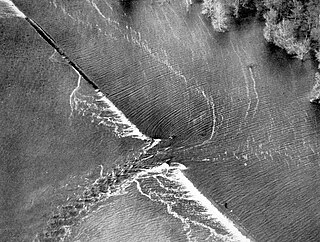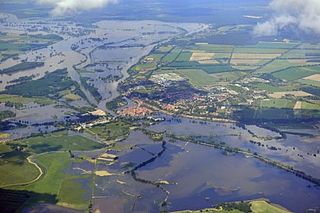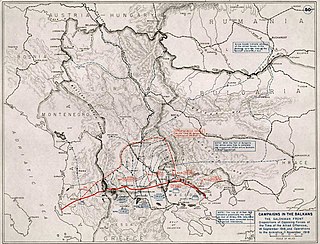

From February to April 2006 many rivers across Europe, especially the Elbe and Danube, swelled due to heavy rain and melting snow and rose to record levels. These are the longest rivers in Central Europe.


From February to April 2006 many rivers across Europe, especially the Elbe and Danube, swelled due to heavy rain and melting snow and rose to record levels. These are the longest rivers in Central Europe.
High Danube levels caused significant flooding in parts of Serbia, Bulgaria and Romania, with damage to property and infrastructure in localities near the shores of the river. The effects of high water across Southeastern Europe were blamed on the poor levee systems in the affected countries.



In Vidin an industrial district was flooded and over 300 people were evacuated to a tent city about 20 kilometers from the town. In Lom, Bulgaria 25 houses, a hotel, the port (which is the second biggest Bulgarian port on the River Danube), and the Danube Park were flooded. Boruna quarter in the north-western part of the city has declared a state of emergency. Of the 30,000 people who live in Lom, 6,000 people are in danger due to the flooding. The two schools are prepared to accommodate any people if found necessary. A few blocks along the water's edge in the city of Nikopol were flooded. 60 people were evacuated and 57 buildings have been flooded so far as well as the main road from Nikopol west towards Pleven. In Rousse the Danube reached 9 meters, beating the previous record at 8,88 from 1970. In total at least 400 buildings on Bulgaria's northern border have been flooded and several have been completely destroyed.
The 2006 European floods were one of the most devastating natural disaster from the History of Romania. Although there were no human victims, the estimated damage is thought to surpass the floods of 1970.
By April 16 over 848 houses were reportedly flooded, with 221 destroyed. [1] The height of the Danube at the beginning of the flood was still below the record level registered in 1895. [2] Romanian officials ordered the controlled flooding of thousands of hectares of unused agricultural spaces to prevent further damage in cities across Romania.
On April 16, in the localities of Rast and Negoi, Dolj County, more than 800 residents were evacuated, as a dam collapsed due to the rising waters of the Danube. Hundreds of houses were flooded and more than 100 of them collapsed.
By April 22, the number of people evacuated from the locality reached 4,000. [3] In the port city of Călărași, a recently opened hotel was flooded on Monday, April 17, causing significant damage to the building and leading to the evacuation of tens of tourists. [4] By this date, the floods had swamped 730 km2 (280 square miles) of land, 400 kilometres (250 mi) of roads and destroyed 20 bridges, while also causing agricultural damage amounting to 4.6 million lei (US$1.5 million). Additionally, five of Romania's nine Danube ports were closed during the flooding period. [1] However, Romanian authorities said on April 22 that the worst of the flooding had passed. Elena Anghel, hydrologist at Romania's National Hydrology Institute stated that, "The forecasts are optimistic. The river will probably remain stable for another two days and then start to fall." [3]
However, by April 28, after several weeks of pressure, key levées along the Danube began collapsing in the counties of Dolj, Călărași, Constanța, Tulcea and Galați. The authorities carried out further evacuations in these regions, the number of evacuated people rising to 16,000. By this date, over 300 houses were completely destroyed with more than 150 villages and towns being directly affected by the floods. [5]

On April 16, 2006, a state of emergency was declared in 10 regions of Serbia. [2] The areas around Serbia's second largest city Novi Sad were particularly vulnerable. [6] A dozen cities were damaged and hundreds of people were evacuated. Near Veliko Gradište, the Danube reached heights as high as 9.65 meters (over 30 ft). Many people left the regions because water could not be purified.
Floods were also reported in the North Macedonia, where several villages were flooded in North Macedonia's Pelagonija Valley.
The Elbe River also rose 13 centimeters higher than in 2002 in some areas, creating 150-year-record-highs. In Germany, the medieval town of Hitzacker had water levels of 7.63 meters, destroying many buildings and causing considerable damage to other private property. Also affected was the town of Lauenburg. The German federal state of Saxony and the Czech Republic were not as affected, because in the four years after the record floodings of 2002, the two partners built a stronger levee system along the Elbe. On April 17, all states of emergencies in all counties of the German federal states of Lower Saxony, Saxony-Anhalt and Brandenburg were rescinded.

The Danube river was at its peak 865 cm (28 ft 4 in) high in Budapest, Hungary, higher than the previous record of 848 cm in 2002. During the floods, approximately 11,000 buildings were in danger of flood damage, 32,000 people were threatened by the water, and 1.72 square kilometres (475 acres) of land were actually under water. Officials also placed most of the area near the Danube under a Level 3 Alert (on a 3-level scale). The flood was so severe that it threatened to spill into the underground in Budapest, through the Batthyány tér station — this, however, did not occur. The underground train stations Batthyány tér and Margit híd (HÉV) were closed out of precaution.
The timing of the flood, incidentally, coincided with the Hungarian general elections.
Many dikes and levees breached because of a poor construction by local and national officials and of an unusual long and hard winter in Central Europe. The snowfall lasted well into April and many areas were frozen, so frost emerged, soaking the earth full of water.
The Red Cross sent humanitarian aid in the form of blankets and mattresses to affected areas.

The Russo-Turkish War was a conflict between the Ottoman Empire and a coalition led by the Russian Empire which included Romania, Serbia, and Montenegro. Additional factors included the Russian goals of recovering territorial losses endured during the Crimean War of 1853–1856, re-establishing itself in the Black Sea and supporting the political movement attempting to free Balkan nations from the Ottoman Empire.

The Iron Gates is a gorge on the river Danube. It forms part of the boundary between Serbia and Romania (north). In the broad sense it encompasses a route of 134 km (83 mi); in the narrow sense it only encompasses the last barrier on this route, just beyond the Romanian city of Orșova, that contains two hydroelectric dams, with two power stations, Iron Gate I Hydroelectric Power Station and Iron Gate II Hydroelectric Power Station.

Nikopol is a town in northern Bulgaria, the administrative center of Nikopol Municipality, part of Pleven Province, on the right bank of the Danube river, 4 kilometres downstream from the Danube’s confluence with the Osam river. It spreads at the foot of steep chalk cliffs along the Danube and up a narrow valley.

In August 2002, a week of intense rainfall produced flooding across a large portion of Europe. It reached the Czech Republic, Italy, Spain, Austria, Germany, Slovakia, Hungary, Romania, Bulgaria, Croatia, Ukraine and Russia. The event killed 232 people and left €27.7 billion (US$27.115 billion) in damage. The flood was of a magnitude expected to occur roughly once a century. Flood heights unknown since St. Mary Magdalene's flood were recorded.

The 2005 European floods hit mainly Romania, Switzerland, Austria and Germany, as well as several other countries in Central Europe and Eastern Europe during August 2005. The disaster came at a time when Portugal was suffering from intense forest fires which left 15 dead and days before the powerful Hurricane Katrina hit the United States.

A levee breach or levee failure is a situation where a levee fails or is intentionally breached, causing the previously contained water to flood the land behind the levee.
In mid-July 1951, heavy rains led to a great rise of water in the Kansas River, Missouri River, and other surrounding areas of the Central United States. Flooding occurred in the Kansas, Neosho, Marais Des Cygnes, and Verdigris river basins. The damage in June and July 1951 across eastern Kansas and Missouri exceeded $935 million. The flooding killed 17 people and displaced 518,000.

Rast is a commune in Dolj County, Oltenia, Romania. It is composed of a single village, Rast.

The June 2008 Midwestern United States floods were flooding events which affected portions of the Midwestern United States. After months of heavy precipitation, a number of rivers overflowed their banks for several weeks at a time and broke through levees at numerous locations. Flooding continued into July. States affected by the flooding included Illinois, Indiana, Iowa, Michigan, Minnesota, Missouri and Wisconsin. The American Red Cross assisted the victims of flooding and tornadoes across seven states and the National Guard was mobilized to assist in disaster relief and evacuation.

The 1970 floods in Romania, brought on by river swelling caused by torrential rains, high winds and a heat wave that melted snow in the Carpathian Mountains, were the worst in modern Romanian history in loss of life, and caused the most damage up to the 2006 floods: at least $500 million; perhaps over $1 billion.

The Danube is the second-longest river in Europe, after the Volga in Russia. It flows through Central and Southeastern Europe, from the Black Forest south into the Black Sea. A large and historically important river, it was once a frontier of the Roman Empire. In the 21st century, it connects ten European countries, running through their territories or marking a border. Originating in Germany, the Danube flows southeast for 2,850 km (1,770 mi), passing through or bordering Austria, Slovakia, Hungary, Croatia, Serbia, Romania, Bulgaria, Moldova, and Ukraine. Among the many cities on the river are four national capitals: Vienna, Bratislava, Budapest, and Belgrade. Its drainage basin amounts to 817,000 km2 (315,000 sq mi) and extends into nine more countries.

The 2009 European floods were a series of natural disasters that took place in June 2009 in Central Europe. Austria, the Czech Republic, Germany, Hungary, Poland, Romania, Serbia, Slovakia and Turkey were all affected. The heavy rains caused overflowing of the rivers Oder, Vistula, Elbe and Danube. At least 12 people were killed in the Czech Republic and one in Poland.
The 2010 Romanian floods were the result of an extreme weather event that struck Romania in late June 2010. Currently, at least 21 people died. The north-east of the country, especially Suceava County was most affected. Also affected was the Chernivtsi Oblast in neighbouring Ukraine.
The 2012 Romanian floods were the result of an extreme weather event that struck Romania in late May 2012. Authorities reported four deaths throughout Romania. The south-east of the country, especially Vrancea County was most affected. Also affected were the provinces of Kyustendil, Blagoevgrad and Sofia in neighbouring Bulgaria.

Extreme flooding in Central Europe began after several days of heavy rain in late May and early June 2013. Flooding and damages primarily affected south and east German states, western regions of the Czech Republic (Bohemia), and Austria. In addition, Slovakia, Poland and Hungary were affected to a lesser extent. The flood crest progressed down the Elbe and Danube drainage basins and tributaries, leading to high water and flooding along their banks.

Between 13 and 18 May 2014 a low-pressure cyclone designated Tamara and Yvette affected a large area of Southeastern and Central Europe, causing floods and landslides. Serbia and Bosnia and Herzegovina suffered the greatest damage, as the rain was the heaviest in 120 years of recorded weather measurements. By 20 May, at least 62 people had died as a result of the flooding, and hundreds of thousands had been forced from their homes. Towns of Obrenovac in Serbia and Doboj in Bosnia and Herzegovina account for most victims, after being inundated by several-meter high waters from nearby rivers.

On June 19, 2014, torrential rains caused severe flash flooding across northeastern Bulgaria leaving dozens of villages without electricity and submerging large parts of several cities in the region. At least 16 people were reported killed – 13 in the Asparuhovo district of Varna, one in Dobrich and two in the village of Tsani Ganchevo in Shumen Province.

The Liberation of Serbia, Albania and Montenegro was a military action in the Balkans in the final weeks of World War I. Between 29 September and 11 November 1918, the Allied Army of the Orient liberated these three countries from occupation by the Central Powers.

The Midwestern United States experienced major floods in the spring of 2019, primarily along the Missouri River and its tributaries in Nebraska, Missouri, South Dakota, Iowa, and Kansas. The Mississippi River also saw flooding, although starting later and ending earlier. The 2019 January-to-May period was the wettest on record for the U.S., with multiple severe weather outbreaks through May in the Midwest, High Plains, and South exacerbating the flooding and causing additional damage. Throughout late May and early June, rain in Iowa, Illinois, and Missouri caused every site on the Mississippi River to record a top-five crest. At least three people in Iowa and Nebraska died.